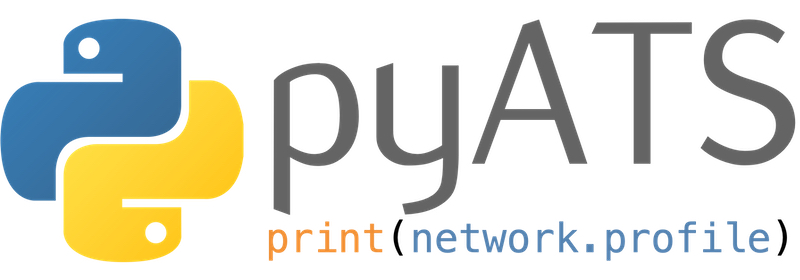How to get a serial number - pyATS

Recently, I got a query from a Customer: how could I easily collect my device(s) serial number?
At first, the question sounded silly: you could just do show inventory all on any IOS XR platform to get the platform serial number. What if you need to retrieve an information 100 times per day? What if you need get this information on 100 devices at once? The goal of this new series of article is to explain different ways to collect a serial number on a device. If you can do it with a serial number, you can do it with anything else!
In thirs first episode, we will use pyATS (Python Automated Test Systems, to be pronounced “py A. T. S.”) was first created as an internal project, to ease the validation of two OS versions. It has been made public in 2017 through Cisco Devnet.
pyATS is made of three main building blocks:
- pyATS, the core block of this ecosystem. It’s a Python framework which leverages multiple Python libraries such as Unicon, providing a simplified connection experience to network devices. It supports CLI, NETCONF, RESTCONF and gRPC. It enables network engineers and developers to start with small and simple test cases.
- pyATS libraries (also known as Genie) which provides everything you need for network testing such as parsers, triggers and APIs.
- XPRESSO, the pyATS Web UI Dashboard.
If you are not already familiar with pyATS and you want to know how to install it and how to use it, have a look at my pyATS series below. https://xrdocs.io/programmability/tutorials/pyats-series-install-and-use-pyats/
The code for this series of posts will be published here.
Other “How to get a serial number” episodes
You’ve missed an episode? You would like to read more? Below the list of published episodes:
| Episode | URL | What’s covered |
|---|---|---|
| 1 - pyATS | Link | Using pyATS to get a serial number on a given IOS XR device |
Using the Devnet sandbox
In order for everyone to be able to run the code, we will use the IOS XR always-on sandbox on Cisco Devnet. Below the sandbox information.
| Key | Value |
|---|---|
| IOS XRv 9000 host | sandbox-iosxr-1.cisco.com |
| SSH Port | 22 |
| NETCONF port | 830 |
| Username | admin |
| Password | C1sco12345 |
Collecting the serial number using CLI
To make sure we are all on the same page, below is the command to collect the serial number with CLI on an IOS XR device and a sample output. In this case, the answer we want to get is SN: 8F21767F3A3.
Getting your hands dirty – Collecting the serial number using pyATS
Enough talking, let’s code!

How to enable pyATS on your IOS XR device?
pyATS leverages the Unicon library to connect to the device. It supports various protocols to connect to your device, such as telnet or ssh.
SSH is the recommended administration protocol for modern operations.
In other words, you just need to make sure you have an account with read rights, which can connects using ssh. You can enable SSH on IOS XR with the command ssh server v2.
Testbed definition
The simplest way to connect to a device is through a pyATS testbed file, written in YAML. This information will be used by Unicon to connect to the device and send the requested commands.
You can find the complete documentation on how to build a testbed here.
In a nutshell, we need to specify how to connect to our device:
IP addressorURL,Credentials,Type, the Network Operating System of our device, in our case IOS XR,Protocol, how to connect to our device, in our case SSH on port 22.
Our testbed look like the below example:
Testbed definition has been covered in more details in this post.
Leveraging pyATS parsers to get a Python dictionary
The power of the pyATS libraries: to be able to convert a raw output (what you would get in a CLI output, printed earlier in this post) into a parsed output (dictionary) where you can easily get a value by accessing a specific key. Once parsed by pyATS, the output would look to something like below:
To better understand the difference between a raw output and a parserd output, you can refer to this article.
Using Python to get the value of a specific key
In Python, you can see a Dicitonary as a set of key: value pairs. For example: { "name": "IOS-XR1", "version": "7.4.2"}.
In my_dict, in order to retrieve my_value associated with a specific my_key, you should use my_value = my_dict['my_key'].
A value can be a dictionary. In this case, we call it a nested dictionary. In our example, the key "module_name" is associated with a dictionary. In our pyATS output, we have multiple nested dictionaries.
Dictionary keys are case sensitive!
In our case, the code to get the Serial Number out of the parsed output should look something like: serial_number = my_output["module_name"]["Rack 0"]["sn"].
You can read more about Python dictionaries in the official documentation.
Bringing it all together
This is what the full script looks like.
- We load the testbed to extact device information,
- We connect to the device,
- We collect the CLI output and we parse it using pyATS librairies,
- We extract the device number from the nested dictionaries,
- We disconnect from the device.
You can find all supported pyATS parsers in the documentation.
pyATS pros and cons to retrieve a serial number
This last section reflects my own experience. Based on your own use of pyATS, it might vary. Feel free to comment if you disagree or if you think about something else.
Pros
- pyATS uses SSH as transport, which is most of the time open on the device.
- You can extract the serial number with very basic Python knowledge and in less than 10 lines of code.
- pyATS has great documentation and a very active community.
Cons
- pyATS is great to retrieve this information once. You might have better tools if you need to retrieve an information periodically (ex: interface CRC errors, once per day).
- If you use another Network Operating System, the parser might not exist yet. It might take many more lines of code to extact what you need using text parsing tools like Text FSM.
- What if the CLI changes and the parser is not valid anymore?
Conclusion
pyATS is a great tool to retrieve a serial number: we were able to achieve our goal in less than 10 lines of Python.
In the next episode, we will see how to get a serial number using NETCONF.
Resources
Below a few useful pyATS resources.
Leave a Comment